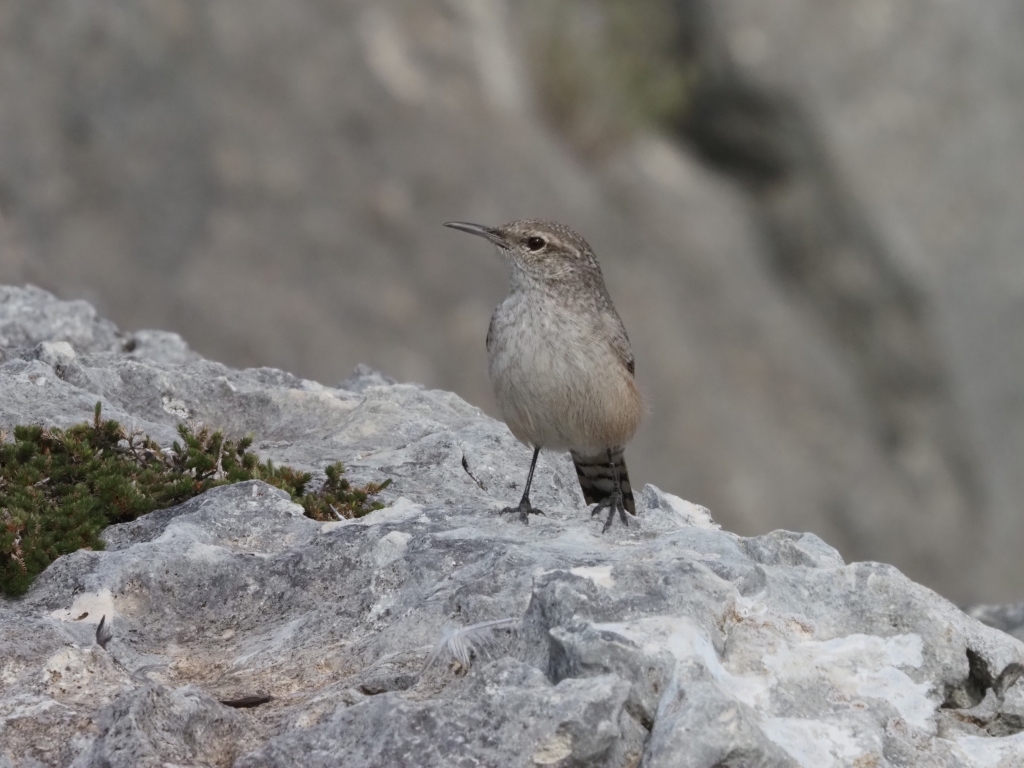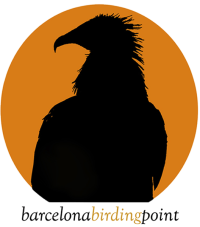Tailor-made tour to Texas
- Dates: From October 16th, 2022
- Number of tour participants: 3
- Number of species seen: 235
All images by Carles Oliver. All rights reserved.
Overview: With a delayof two years due to the pandemia, out tailor-made tour to Texas went on finally in October 2022 with 3 tour participants. Originally the idea was to start to the tour at the beggining of November, but part of the clients wanted to be moved to late October so finally the starting date was decided to be Otober 15th. During the tour we thinly explored the large woodlands North of Houston and the desert-like areas around Del Rio but the main effort was to enjoy birding in the many hotspots along the Mexican border between Hidalgo and the Golf as well as around Corpus Christi.
Weather in average was stable, with a couple of days of light rain and low temperatutes for the season. In Corpus Christi we had some days of strong winds, making birding a big uncomfortable and sometimes frustating. The last day of the tour was also marked by strong winds and rains.
Really looking forward to be back in Texas. This time in November, as originally planned!
Day 1. Our guests attented the tour from differents countries so we met at Houston International Aiport. It was the afternoon but we could still have almost a pair of hours of birding. We fastly moved to a corner nearby to enjoy the first bird in the Americas. Here, a short walk produced 5 Scissor-tailed Flyatcher, American Kestrel and Cooper’s Hawk but also common birds like Carolina Chickadee and Blue-grey Gnatcatcher. A small pond was full of Killdeers as well as some Greater Yellowlegs, Wilson’s Snipe and 3 Baird’s Sandpipers. Here we also had a flock of 4 Westerm Kinbirds, that turned out to be the only sight of this species nesting from the mid-West to the Pacific Ocean.


Day 2. After a good rest we left our accommodation to explore Sam Houston National Forest. Before that, a 10 minutes short walk around the parking lot produced a good summary of the garden birds living in the area. Here we got some really common birds like Northern Cardinal, House Finch, Downy Woodpecker, Blue Jay, Red-bellied Woodpecker, Carolina Wren, Orange-crowned Warbler and Ruby-crowned Kinglet.
After a short transfer we did have a first stop inside Sam Houstol NF. Soon, we connected with some of the many Pine Warblers around and Brown-headed Nuthatches showed up very well but high. We certainly didn’t have to wait long for the very especialty of the area to appear, and after some minutes, a mixed flock of Woodpeckers revealed to not Red-bellieds but also 3+ Red-cockaded’s and even a rather unexpected Hairy Woodpecker! It took some time but everybody in the group had excellent views on the Red-cockaded Woodpecker, a quite endangered species linked to long-leave pine savannas. A further walk into the area produced several Carolina Chickadees but also the first White-eyed Vireo, Tufted Titmouses and Eastern Phoebe of the trip.


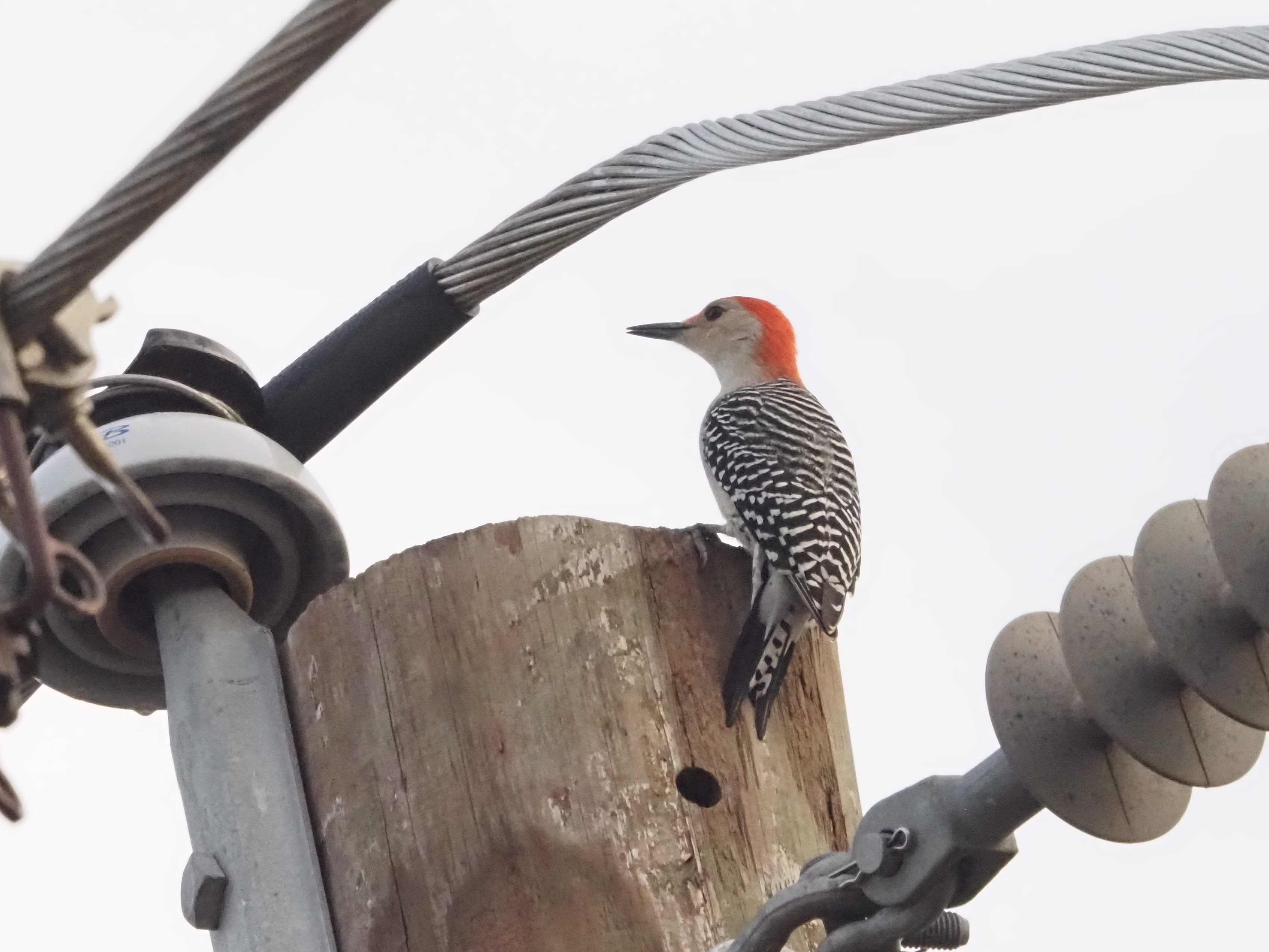
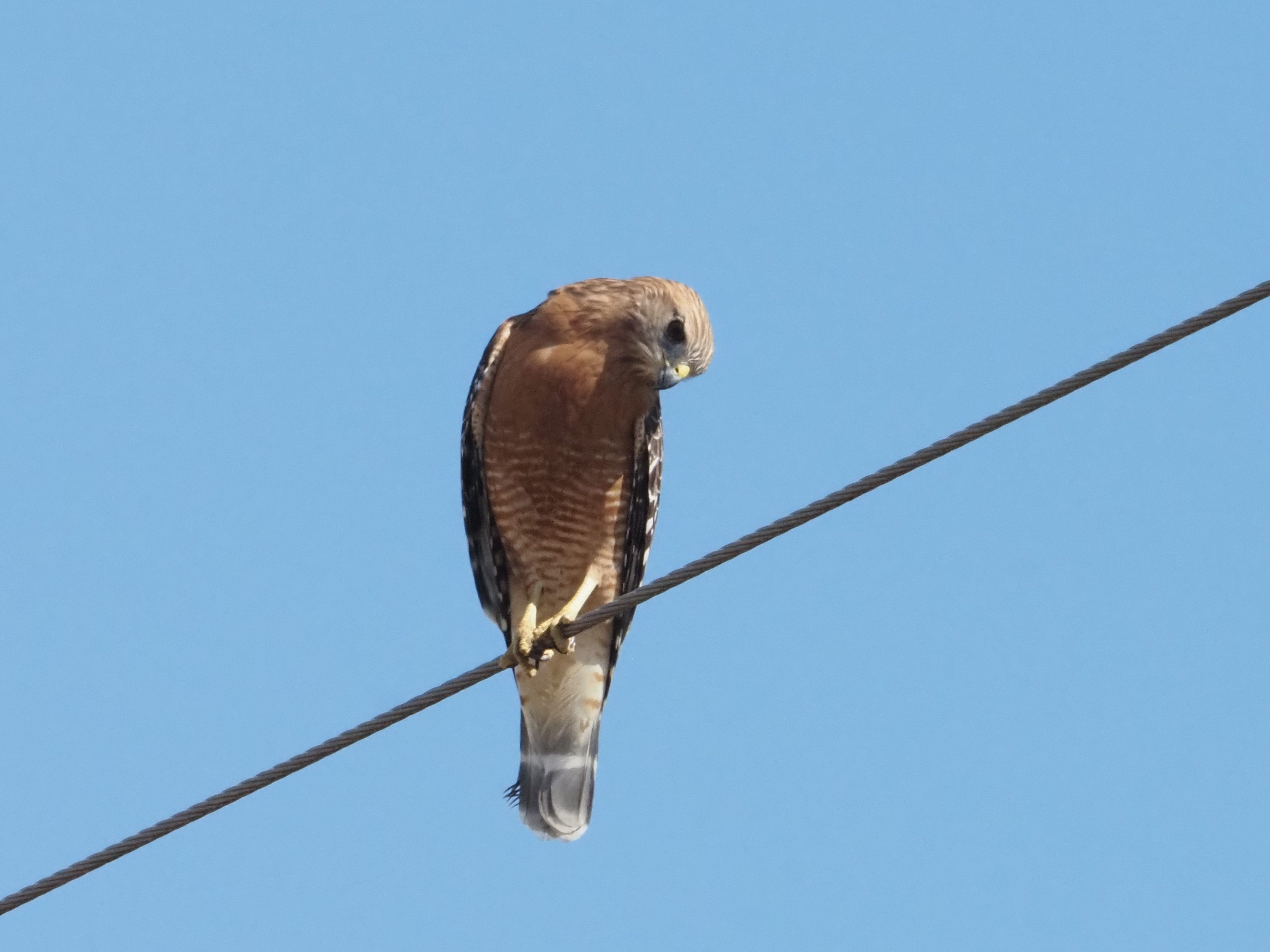
After such a great start, we started moving East. While driving the area both Red-shouldered and Red-tailed Hawks were noted. It was a sunny and calm day and by midday temperatures went high up.
We arrived around San Antonio by the early afternoon, and even if it was still warm we stop around Crescent Bend Nature Park for some birds. A nice flock of Eastern Meadowlarks provided good looks in the yellowish prairies and we were surprised by the presence of 5+ Crested Caracaras, some of them providing close up views. Once arrived to Betsen????? we had a short walk around. Here we got our first Ruby-throated Hummingbird of the trip but also Lincoln’s Sparrow, Rose-breasted Grosbeak, Ladder-backed Woodpecker, Lesser Goldfinch and Nashbille Warbler. At sunset, we were surprised byt the wholoes of a Barred Owl that, despite our efforts, was reluctant to show out.



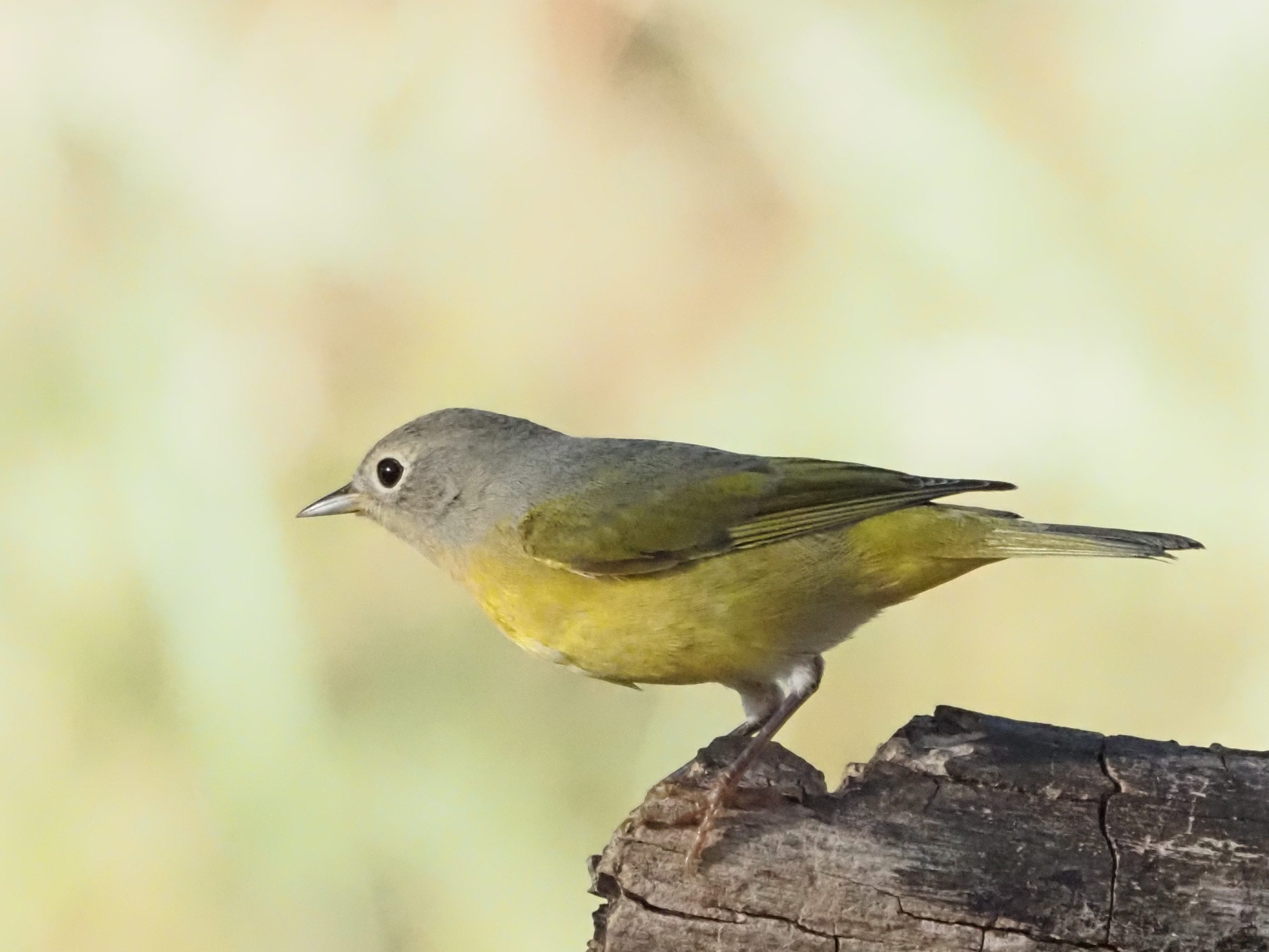
Day 3. This day started with a massive rain and very low temperatures. Theoretically, the morning was devoted to explore one of the main wetlands south of San Antonio, but due to the bad weather we just went directly with the transfer West right beside the Mexican border at Del Río.
En route we had a first stop when the rain stop to explore some open lands and farming. Here we were surprised by a number of good birds including Western Meadowlarks, Golden-fronted Woodpecker, Dickcissel, Vesper & Lark Sparrows and the first Vermilion Flycatcher that was extremely welcome by the group.




The transfer to Del Rio was fast and easy, and marked by a Ferruginous Hawk spotted by the highway. The weather was still really fresh and temperatures clearly lower than average, even fresh! Just arrived to Del Rio we went to explore some corners around the city. Our first stop was to explore the Cementrey ______ and here we found 12+ Eastern Bluebirds, 10+ Vermilion Flycatchers, small flocks of Lark Sparrows feeding along with Lincoln’s and House Finches, several Scissor-tailed Flycatchers and a dark form Red-shouldered Hawk. Following the border between Mexico and USA we also had our first of mane Great Kiskadee. The area is rich in lake and ponds, and in one of the them we got Ringed Kingfisher but also first views on Common Yellowthroat, Northern Rough-winged Swallow, a lovely male Northern Harrier and Neotropical Cormorant before going for dinner and rest at our comfortable accommodation.

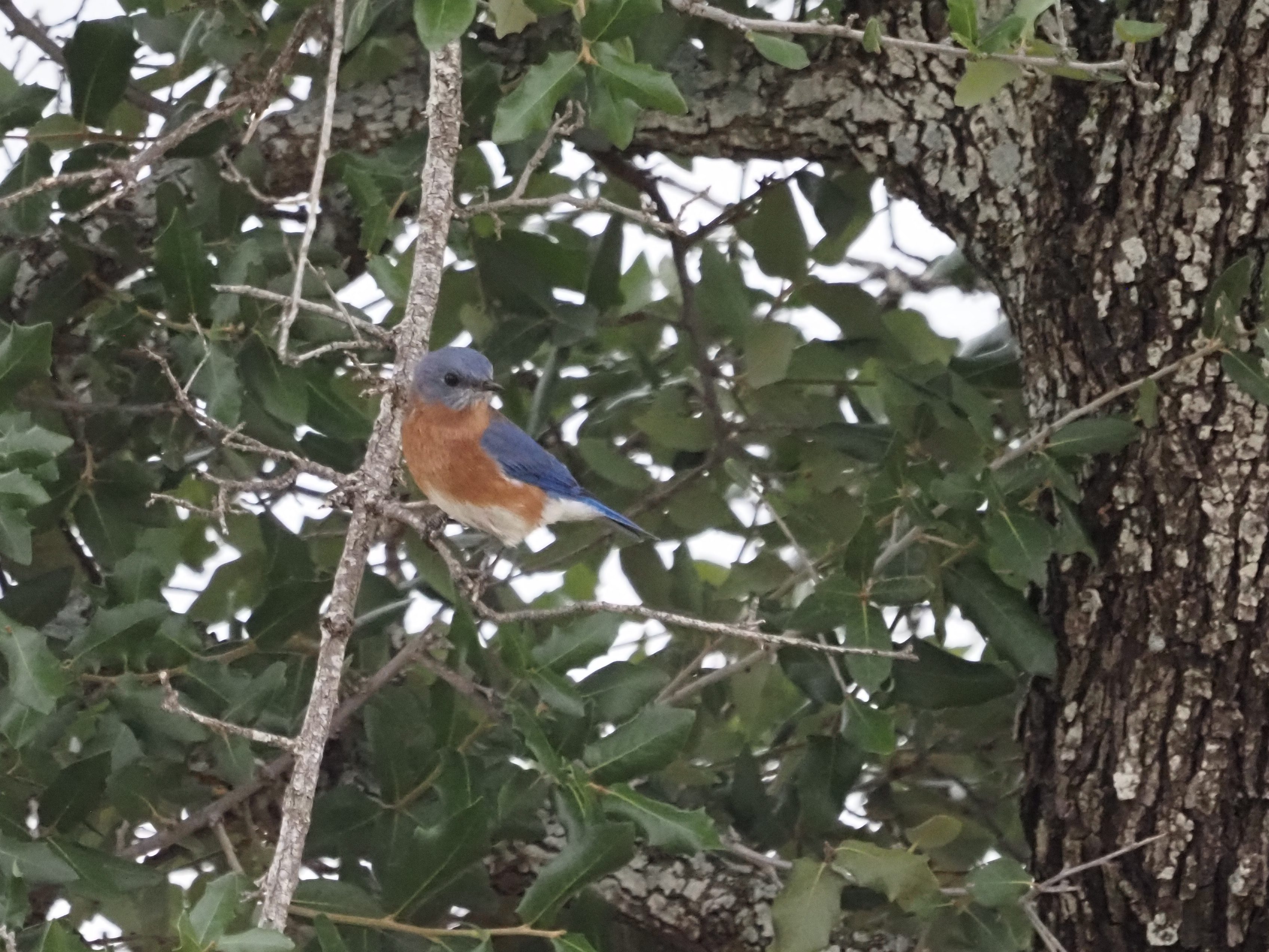





Day 4. The day started as cloudy as the day before, and with temperatures 10ºC below the average of the season! A great weather to explore the desert. Our first visit to Seminole Canyon State Park was concentrated into exploring its plains and bushland, famous for its rich birdlife. A short walk throught the plains fastly produced a good number of species. After only a few minutes a calling came from the bushlands, and after checking we all glad to find a wonderful Pyrrhuloxia sitting near the top of the bush, calling. The excitation came to the group, the bird flew off and despite all our efforts we were uncapable to relocate the bird. Sparrows seem to be everywhere, with small flocks constantly moving in the grassland. Here we enjoyed great views on Cassin’s, Vesper, Lincoln’s, White-crowned, Clay-coloured and Lark Sparrows. Black-throated Sparrows looked like specially common in this dry ambient, and after checking several flocks we were surprised by a Harri’s Sparrow sitting along with Lark Sparrows! That’s a good bird, with really thin records in the area.
Turkey Vultures were pratolling the sky while a massive number of Monarch Butterflies were doing its way South to their winter. There were thousands of them, many times gathering in small “flocks”. Their number was so numerous than we drove over tens of them while approaching the area. Not possible to skip them all in the road, and the tarmac showed tens of them dead or badly injured in a very sad view.
After enjoying the plains we finally decided to go down to the rocky areas. In our way to the rock scarpments, a Black-tailed Gnatcatcher left the group wanting more of it. Once if the rocks, we were lucky to find out a lovely pair of Rock Wrens doing its thing along the cliff edge in a wonderful sight. In our way back the clouds cleared for a while, and we could only see a flock of Eastern Meadowlarks and some Scissor-tailed Flycatchers.



After lunch we moved North, amid to explore some more desert-like ambients. During the next 3 hours we explored different valleys and plains. The sky was again cloudy and we could enjoy a good selection of the birds living in the scrublands. The fast moving Black-tailed Gnatcatcher gave us a hard time but finally everybody in the group could connect with it. While searching for the Gnatcatcher we were surprised by a fly over flock of Woodhouse Scrub-Jays! Along the afternoon we had three flocks of this restless species but never got any shot! Canyon Towhee was another great adding to our list, providing excellent sights as Common Ground Doves did along the tracks of the area as well as at least 3 Chihuahuan Ravens along the roads.
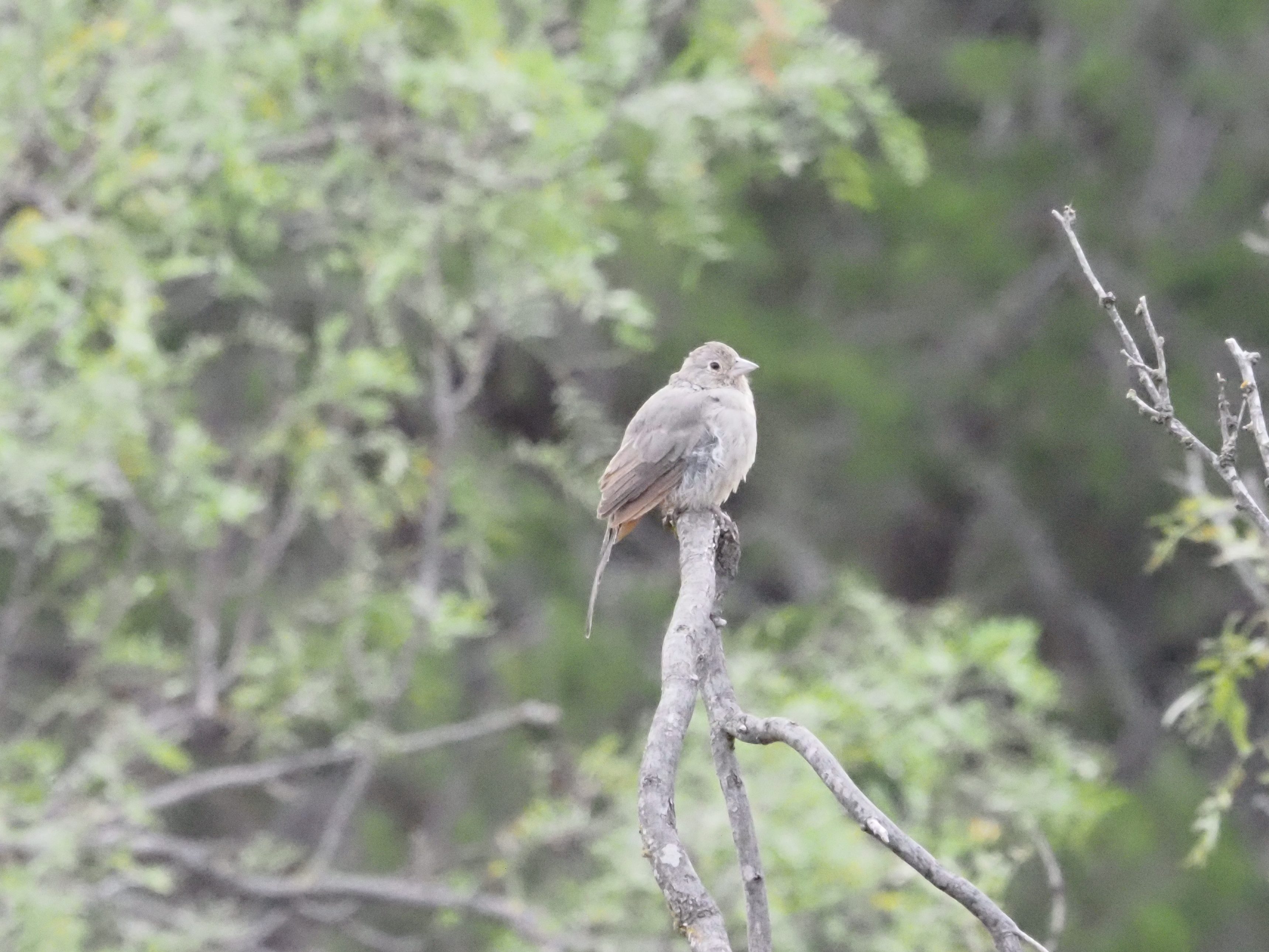

Day 5. Early morning morning start to explore another corner in the Seminole State Park. This time we went into a very impressive gorge in search of the sought-after Canyon Wren, a specialist on rock faces that spend a lot of time in crevices and ravines and thus, difficult to locate. In our short walk in the ravine we got the first Black-crested Titmouse of the trip as well as Golden-crowned Warbler and Common Raven. It didn’t took long before we located the first Canyon Wren, moving in fast, almost mouse-like runs along the crags. Investing some time, we got more than decent views in this awesome bird and we even had a second individual in another corner of the canyon. Back to the vehicle we decided to drive back to the same place we were the morning before, expecting to find a Roadrunner in the area. Another walk was required to explore the place, and even if we didn’t find any Roadrunner, we were regarded with a fine selection of birds. The flocks of Sparrows were as active as they previous day, and we had the same species as the day before but adding a Lark Bunting and, the most unexpected, 2 Green-tailed Towhees that showed up at two different places! ere we also hot the only Say’s Phoebe of the trip along with a pair of Scaly Francolins flying out of the bushland.



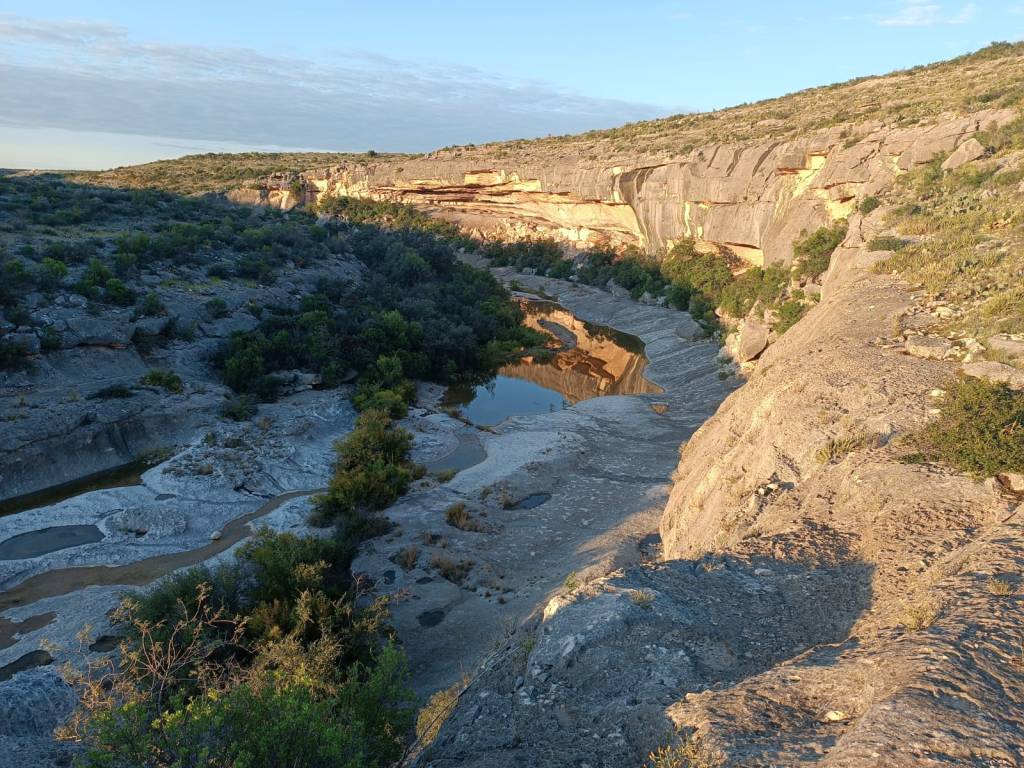
After such a great morning at Seminole we still had a last stop at Del Rio to explore one of the urban parks. Here we got a nice selection of birds including the first House Wren of the trip but also both Ringed & Velted Kingfishers, Yellow-rumped Warblers, Common Yellowthroats and Lesser Goldfinches to name a few.
we drove South in search of the birding hotspots along the Rio Grande. Along the way, we enoyed several Harri’s Hawks in the posts, and also several Crested Caracaras. A stop in some small ponds near Freer provided the first Blue-winged & Green-winged Teals of the tour along with a minimum of 2 Cinnamon Teals. When approaching the our accommodation, a Broad-winged Hawk just passed over our van, giving a great end to this day!



Day 6. Our first day exploring Rio Grande was devoted to the Santa Anna State Park. This large natural reserve protects an extensive patch of indigineous evergreen forest. Once upon the time, this valley had been covered with this lush vegetation, but nowadays only small number of locations remain. Black-crested Titmouses, Golden-fronted Woodpeckers, White-eyed Vireos and Grey-backed Gnatcatchers fullfilled the parking place with its song and calls, and the group enjoyed very much taking images of all of them. Green Jays appeared also almost inmediately, with their harsh calls announcing their arrival and 3 Inca Doves were feeding on the ground.
Walking into the habitats in Santa Anna is like transporting yourself into a different era, which majestic trees covered by !!!!!!!!. Once inside the park, we were surprised by the first Clay-colored Thrush perched in a low branch. Curve-billed Thraser was calling a bit beyond and we had to wait a bit until the bird showed up. The time invested was worth it not only because of the good looks on the Thraser but also because a Red-eyed Vireo decided to walk into view! The calls of the Great Kiskadees were constant and they were easily found in the top the trees along our way. At some point we saw a Kisadee chasing a smaller, colourful bird and we were all surprised to see that it an Altamira Oriole that decided to stop in the out at the top a dead tree! Couch’s Kingbirds were also around in a wonderful combination of birds. But the Altamira Oriole was not alone and we count not 2 but 5 of these great birds moving tree to tree, sometimes perching in the out and vocalising.




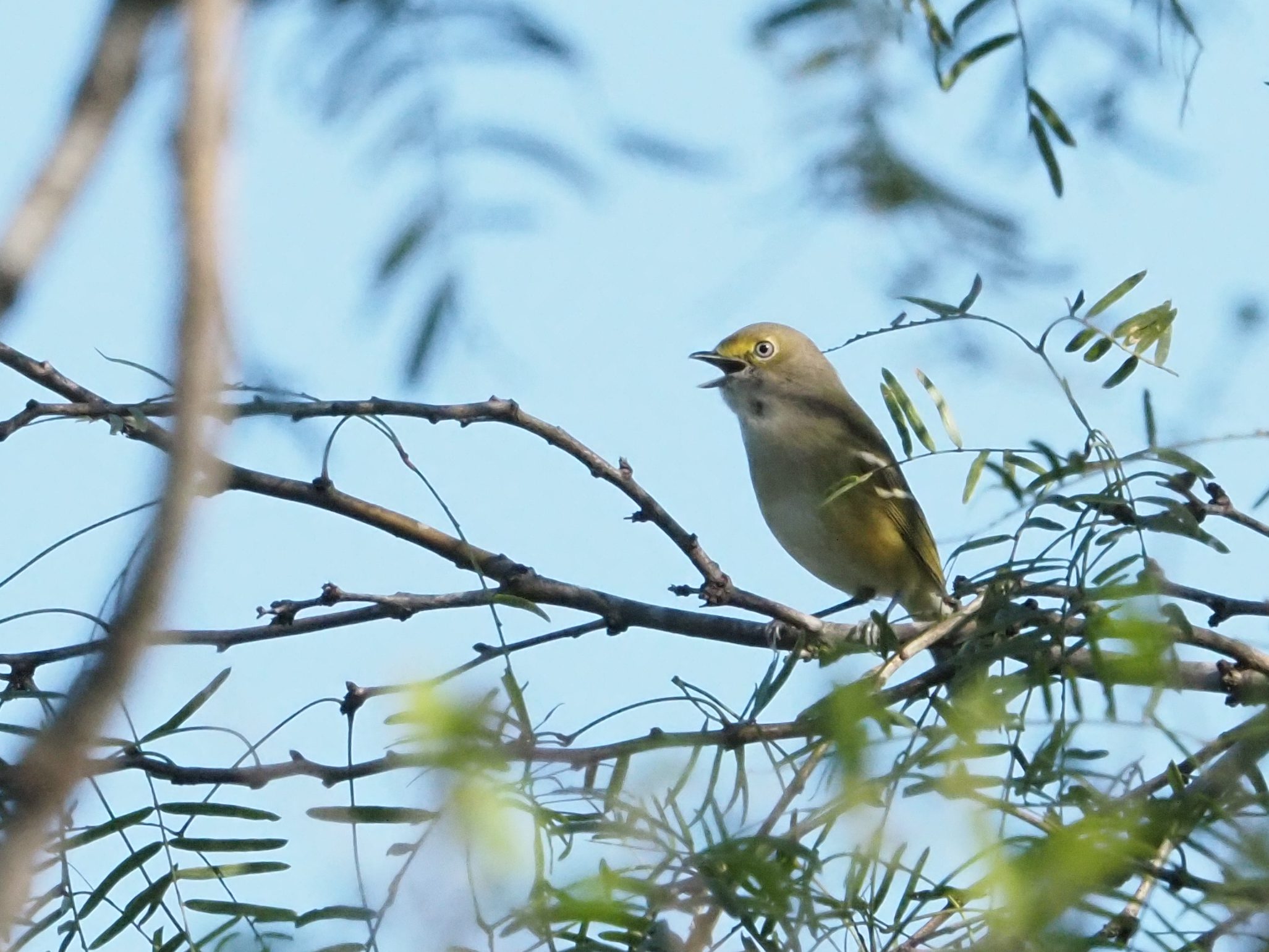

This had been a great start of our day! Approaching the first basins we added some species to our list including both Pied-billed & Least Grebes, Lesser Yellowlegs, Snowy Egret, Long-billed Thraser & some Cave Swallows moving along with Northern Rough & Barn Swallows. In our way out, a wonderful Blue-headed Vireo jumped out from the vegetation, but only for a few second before flying bak up to the canopies. When arriving to the parking place, the first flock of Plain Chachalacas appeared in our way, providing great looks.
After a short midday break we went to explore the farming around the border wall between the USA and Mexico. Certainly not an easy place to do birding due to the several border patrols, but with great birds and gentle police officers all the way long. Our first stop could not be better as we got 1 Swainson’s, 2 White-tailed and 2 Red-tailed Hawks that seemed to be hunting the area along with 1 Northern Harrier. Here we also found 2 obliging Burrowing Owls that were extremely well appreciated by the group. The area was full of Scissor-tailed Flycatcher and back to a woodland we enjoyed 1 Tropical Kingbird before has one of the surprises of the day, a wonderful Eastern Screeching Owl that was half way out of its nesting box and provided amazing scope views!
Back to the open lands, some paddy fiels around were full of Western Cattle Egrets but also White Ibis and one of the very few White-faced Ibis along the tour! A bit more of drive in such a great area allowed us to find a Grey Hawk hunting just by the road, and we could see how this very elegant small bird of prey captured a water snake a few meters away from us! Beyond this point we had a short-walk in a patch with dense scrubs allowed us to see the first Tenneesse Warbler of the trip and the second Clay-colored Thrush of the day.





Day 7. Bentsen State Park is often related as a birding heaven due to the massive number of species noted here. Its extensive mesquite habitats, combined with woodlands, thickets and water bodies allows a wonderful birding all year round and it is specially noted for birds of prey both resident and migratory. Soon after getting inside the natural area we got a family group of Chachalacas feeding on the ground and a small flock of warblers including Nashville, Tennesse and 3+ Black-and-White’s, a wonderful start under any circumstance. The mesquite ambients were great and beyond Eastern Phoebes and Orange-fronted Woodpeckers we got excellent views on Verdin, Eastern Poo-weet and White-tipped Dove. A Lazuli Bunting flew over and briefly stop in a tree, but not everybody connected with the bird before flew off. A bit beyond, a pair of Grey Hawk flew low over the path, allowing again excellent views on the birds! The air was steadily warming up and by 10:20 we saw 2 Cooper’s Hawks circling. Red-railed Hawks were also noted right before an endless stream of Turkey Vultures appeared in the sky. With their characterystic flight, balancing their body and the wings up, hundreds of them were flying quite low. All the county is famous for being a natural corridor for birds of prey in migration, and in the half an hour that we spent at the Bentsen Hawk Torrer we enjoyed impressive raptor action involving not only hundreds and hundreds of Turkey Vultures but also some Swainson’s, 3 Broad-winged, some Red-shouldered’s, 3 Sharp-chinned’s, 1 Merlin, tens of American White Pelicans and the only 2 Wood Storks of the trip circling along with some Black Vultures. In our way back, we were delighted to find a flock of 15+ Wild Turkeys in the road itself.
Back to the thickets around the headquarters of the park, we got a nice flock of birds feeding on thickets around. New species for the trip inside the flock icluded: 3 Yellow-throated Warblers, 2 Wilson’s Warbler, Baltimore Oriole and Black-chinned Hummingbird.
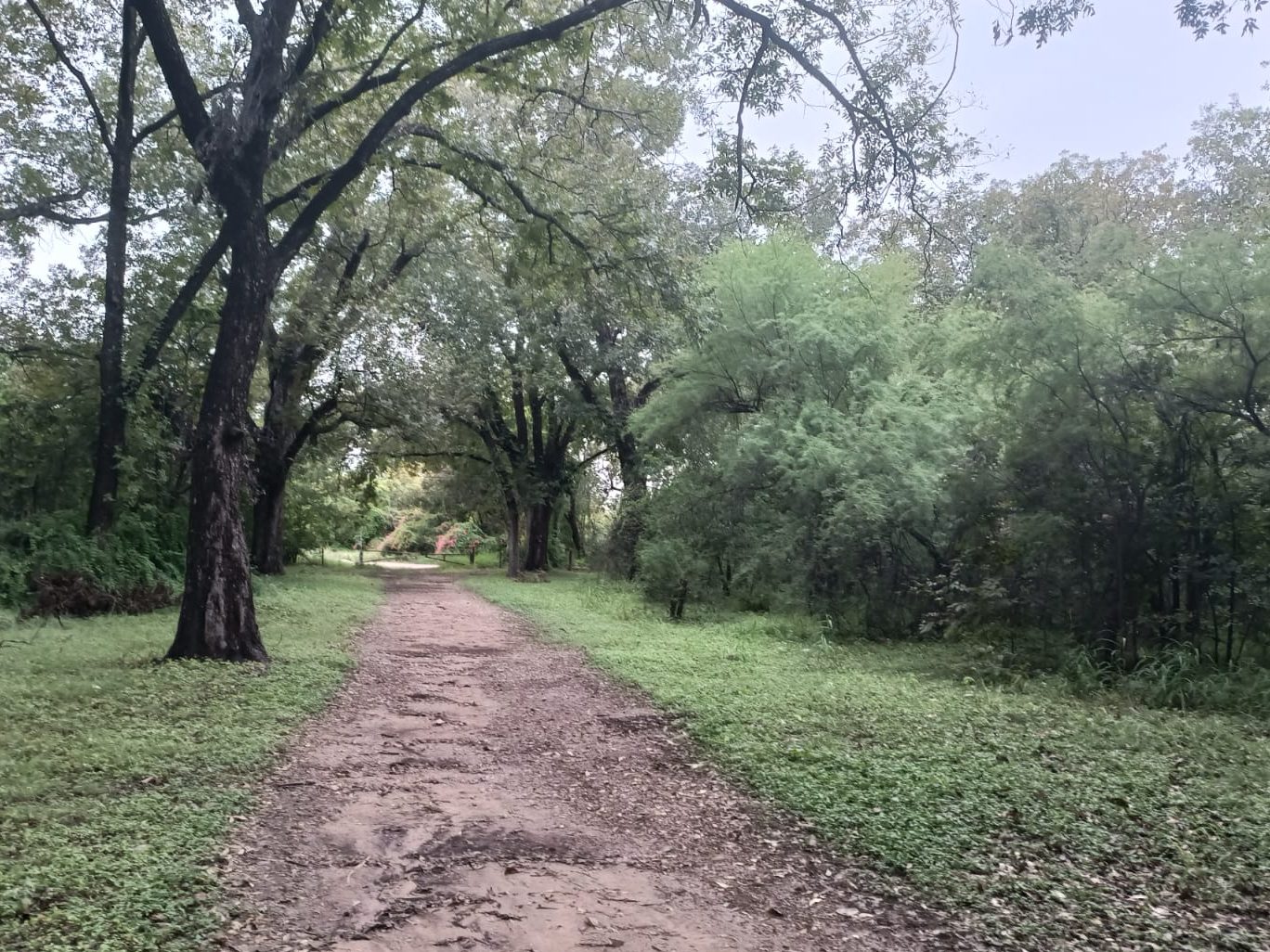


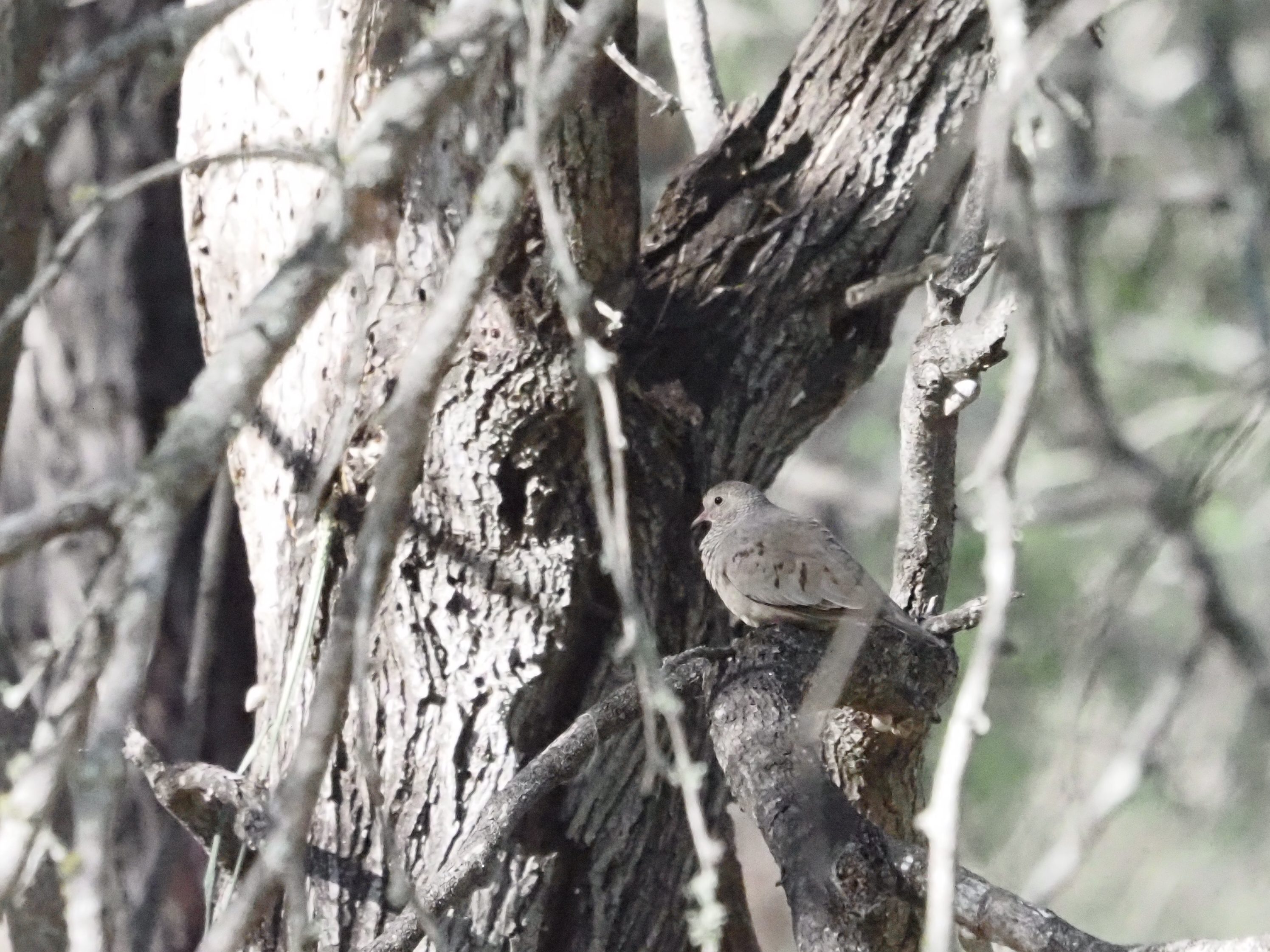



In the afternoon went to explore a small natural reserve not far away from Bentsen and we got excellent views on Green Kingfisher, Wilson’s Warbler, Buff-bellied Hummingbird. Other interesting species here included Rufous Hummingbird, Spotted Sandpipers, Least Grebe and the only one Green Heron of the trip!
An evening stop was added in a small pond between roads. Here, the small lagoon produced Black-necked Stilts, Long-billed Dowitchers, Greater Yellowlegs and Blue-winged Teals but everything vanished when 2 Cooper’s Hawk launched themselves in a king of coordinated attack to the waterfowl! The lagoon went empty, but only for a pair of minutes when 4 Mexican Ducks arrived, allowing great scope views before leaving. This is a great species to have. Formerly considered conespecific with Mallard, nowadays is treated as a different one, with small (but maybe overlooked) populations in the American side of the Rio Grande Valley.
In the fields around 3 Nothern Harriers were hunting along with a White-tailed Hawk. A walk in a small area of mesquite produced little songbirds but we were surprised to find a Common Parauque roosting on the ground! Delighted to find this speciality of the mesquite, we enjoyed walk-away views on the bird. Later in the evening we came back to the open fields, and with the very last light of the day we had a Common Whir-Pool flying around us. Some Burrowing Owls were calling around and in our nocturnal drive out of the area a Coyote appeared in front of the van allowing great views!
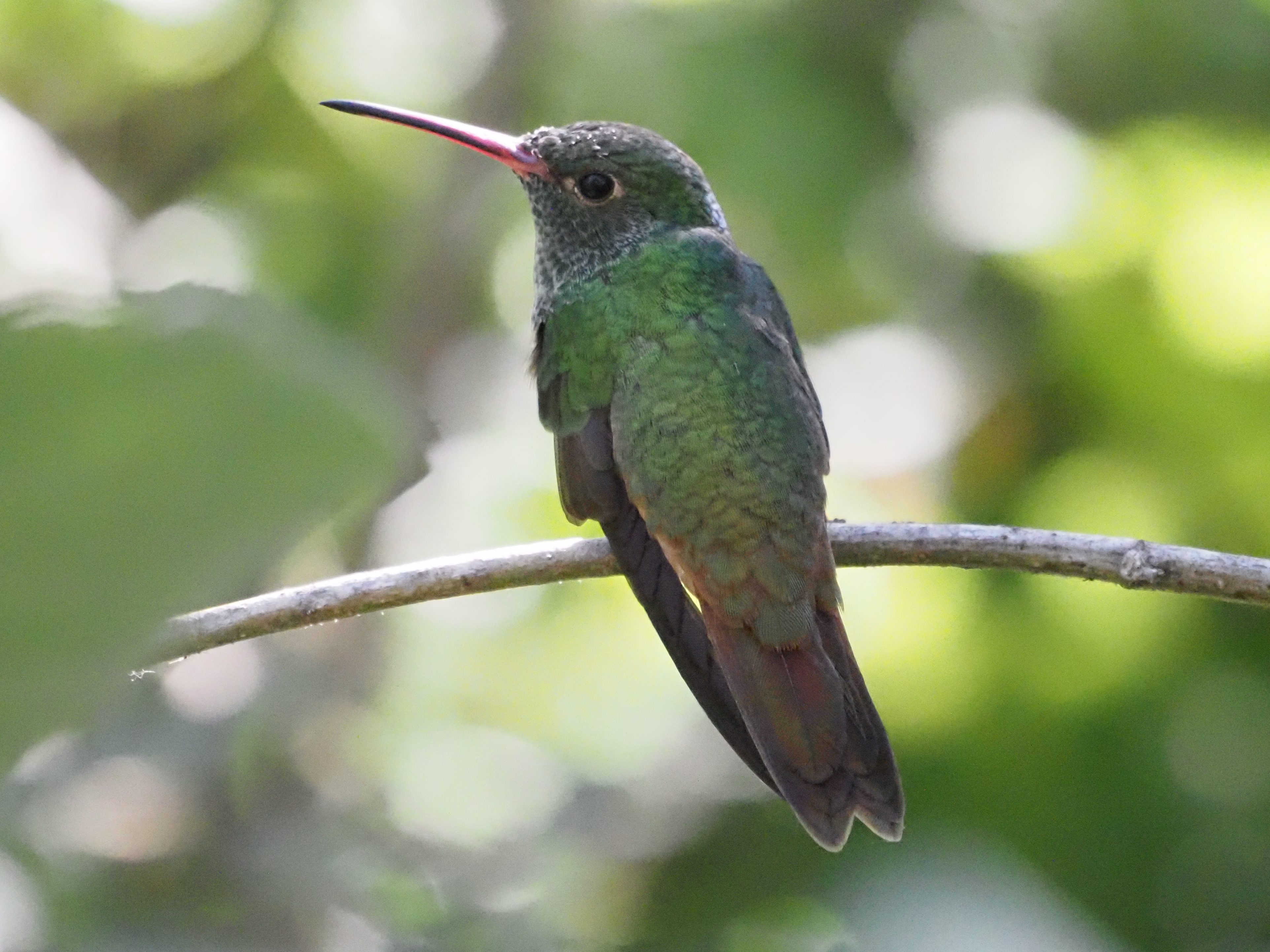
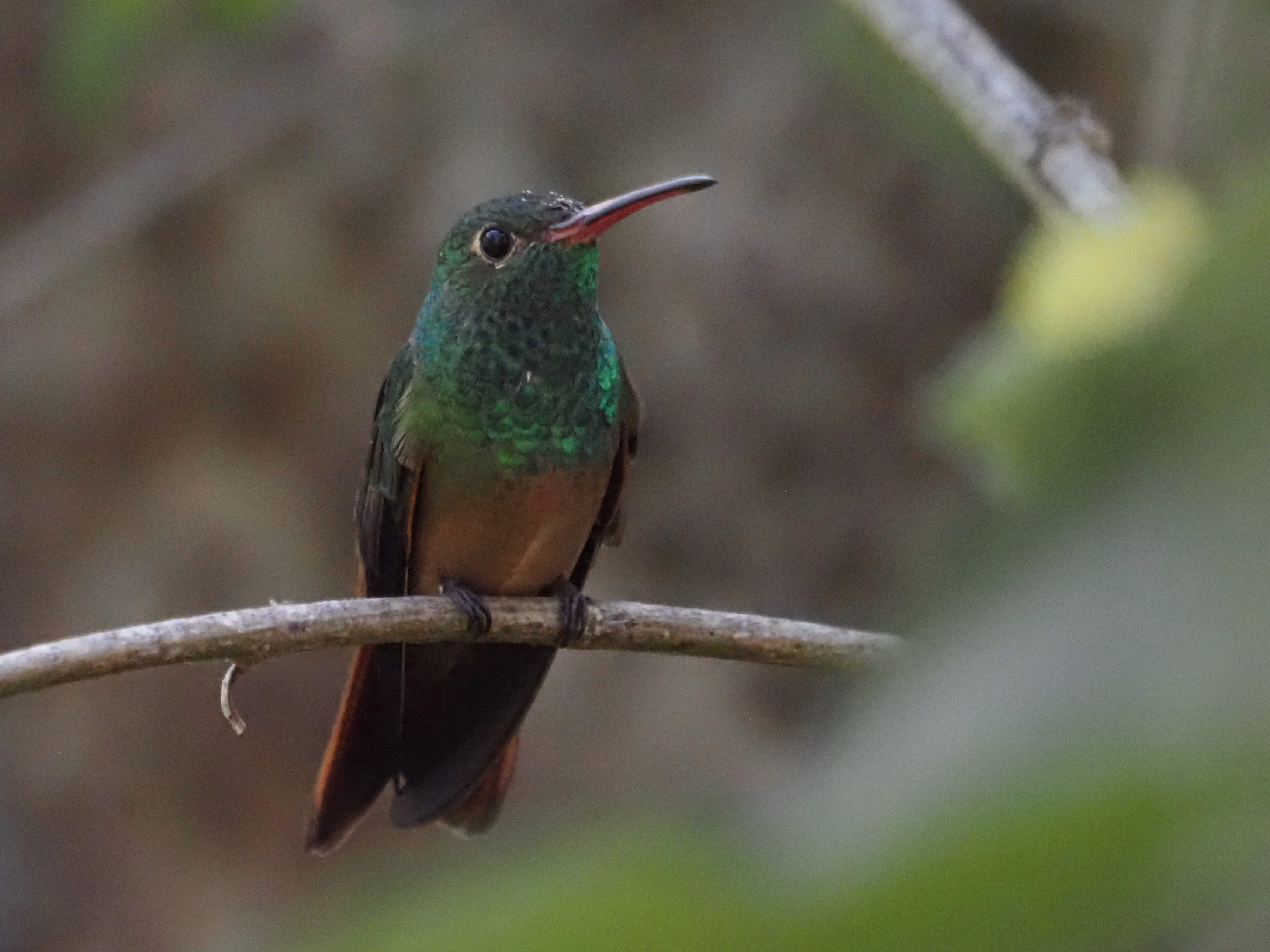





Day 8. A very early start of the day was necessary to accomplish the intense program for that day! First stop at Estero Llano State Park, where we were delighted with the image of tens and tens of Black-bellied Wistling Ducks early in main lagoon early in the morning. Bird activity was nice and the reedbeds around not only provided good views on Common Yellowthroat but also on Sora, Yellow-crowned Night Heron, American Moorhen and Solitary Sandpiper. The lagoons had good number of ducks including Gadwalls and Mottled Ducks. A walk around also produced Wilson’s Warbler, Lincon’s Sparrows, the first Bronze Cowbirds of trip as well as Great Kiskadees and Ruby-crowned Kinglets.
A second stop in another nature reserve nearby produced our best views on Green Jays along with some Yellow-throated Warblers, the only one Northern Parula of the trip and close up views on Ladder-backed Woodpecker.




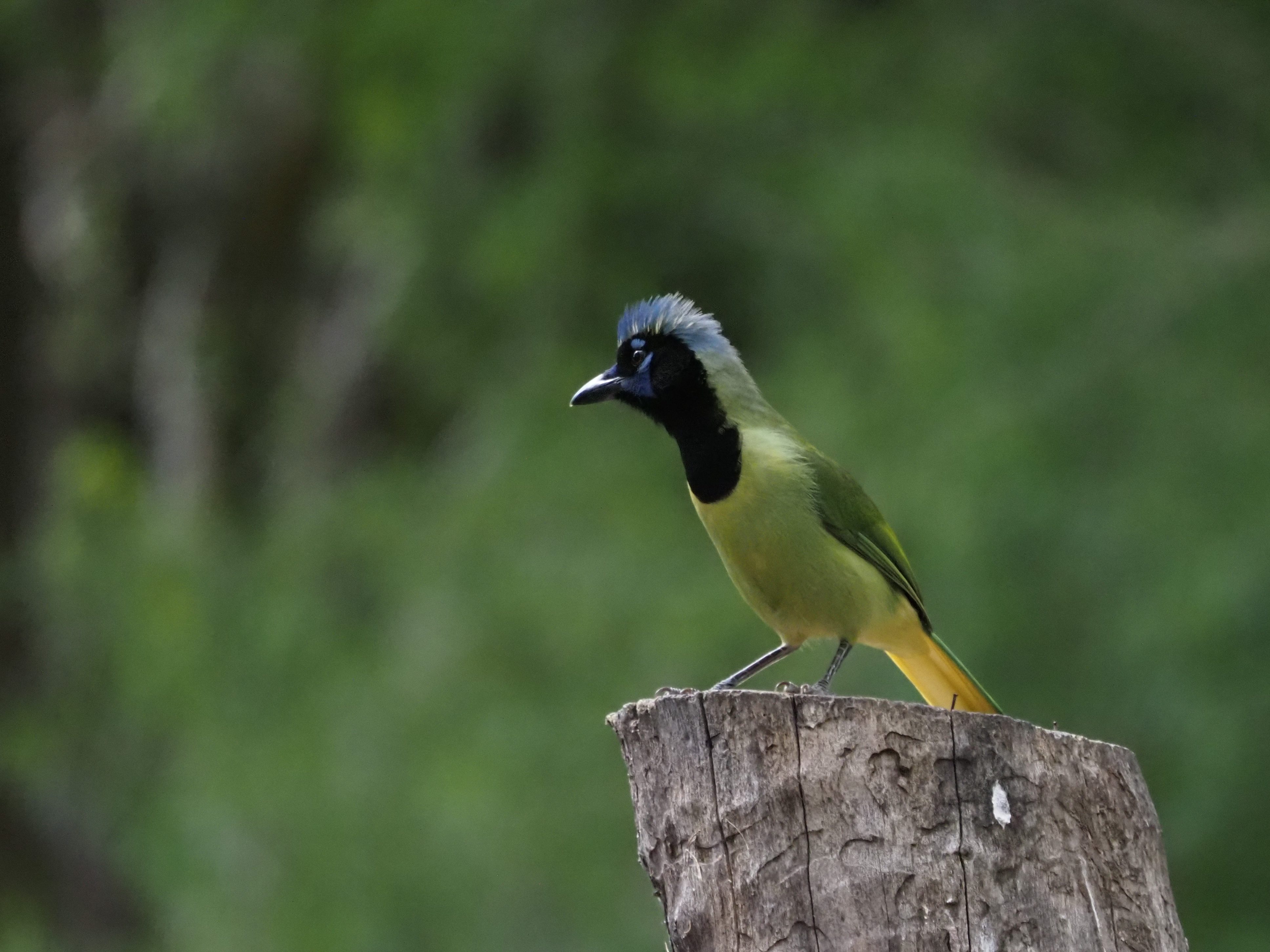


In the afternoon we drove inside the massive Atascosa Wildlife National Refuge. Soon we got the first White-tailed Hawks of the trip along with several Ospreys, Loggerhead Shrikes and American Kestrels in the posts and wires. Once in the main laggoon, an enormous flock of ducks and American Coots was waiting for us. There were hundreds of American Wigeons along with 200+ Redheads, several Pied-billed Grebes, 7 Canvasbacks, 5+ Ruddy Ducks and 2 Ring-necked Ducks. In the shores of the lake we got the first Willet of the trip. Tricolorated Heron, Snowy Egret and Little Blue Heron were feeding along the shores, short distance from each, allowing good us to compare them with each other. In our way out of the Atascosa we were surprised to find the first Greater Roadrunner of the trip, gentlenly stopped by the road. It allowed wonderful views and some great shots. In the coming 3 miles we got another 3 Roadrunners, allowing all great views including a small hunting scene of the particular terrestrial cuckoo. But this was not the only surprise of the road, and some minutes a random stop in the road allowed us to find 3 Long-billed Curlews feeding in the farmland. Clouds of Red-winged Blackbirds and Brown-headed Cowbirds covered the area, and a good scanning in the distance produced 2 Aplomado Falcons in an aerial fight. This is an endangered species with tiny populations in the grasslands and dunes in Southern Texas.



Day 9. Parcs + Port Aransas Nature Preserve. Morning deserved to explore some urban parcs and small corners around Corpus Christi. Our first stop was at Pollywog Wildlife Sanctuary, where birding was a bit low but we still managed to enjoy good views in some migratory birds such as Yellow Warbler, Least Flycatcher and Audubon Oriole plus some interesting regular species including Marsh Wren, Sharp-chinned Hawk , Common Yellowthroat, House Wren and Grey Catbird. Our second stop, at Bucher Park, produced the best views on Blue Grosbeak of the trip along with and Ruby-throated Hummingbird and some warblers.

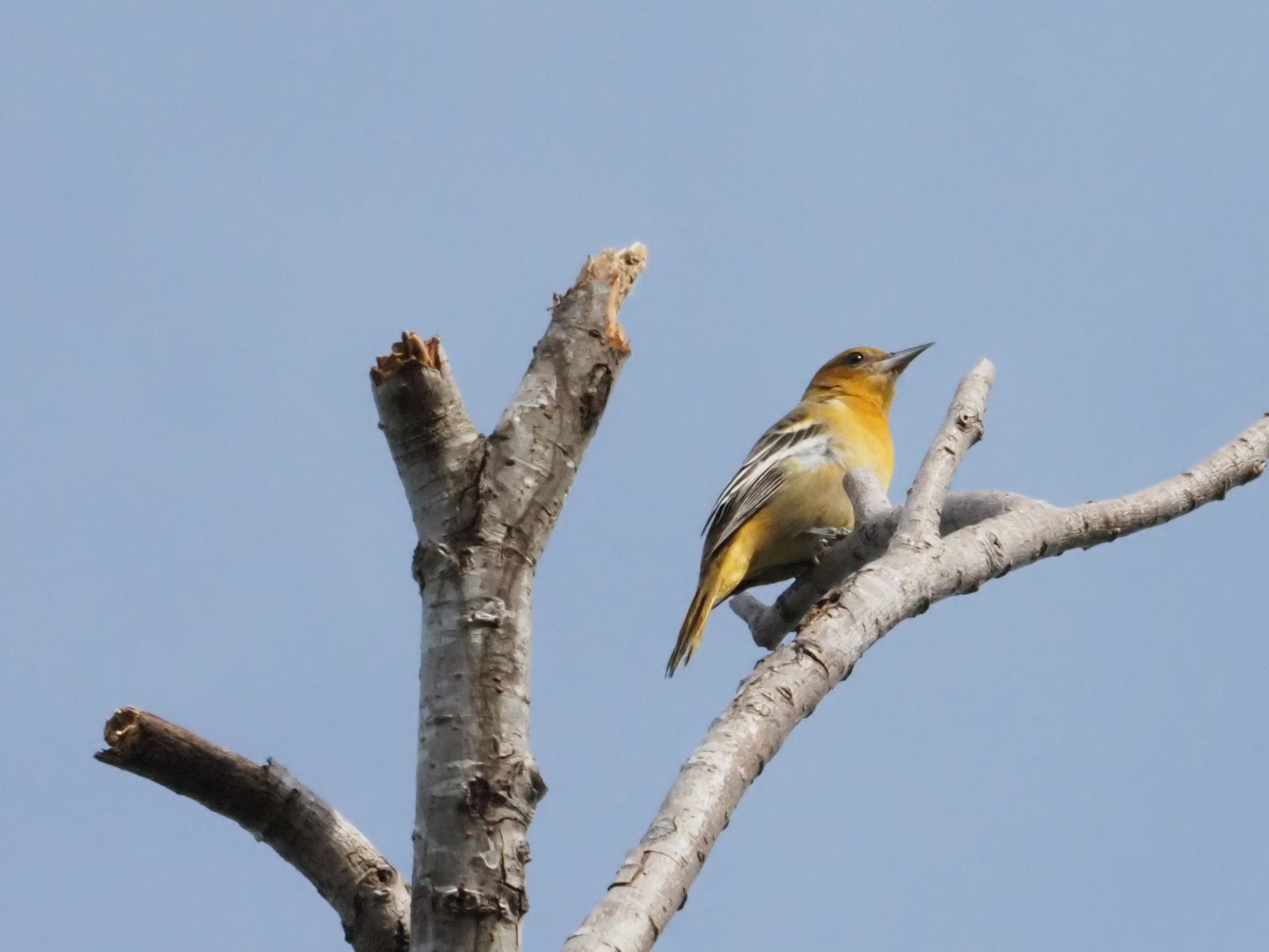
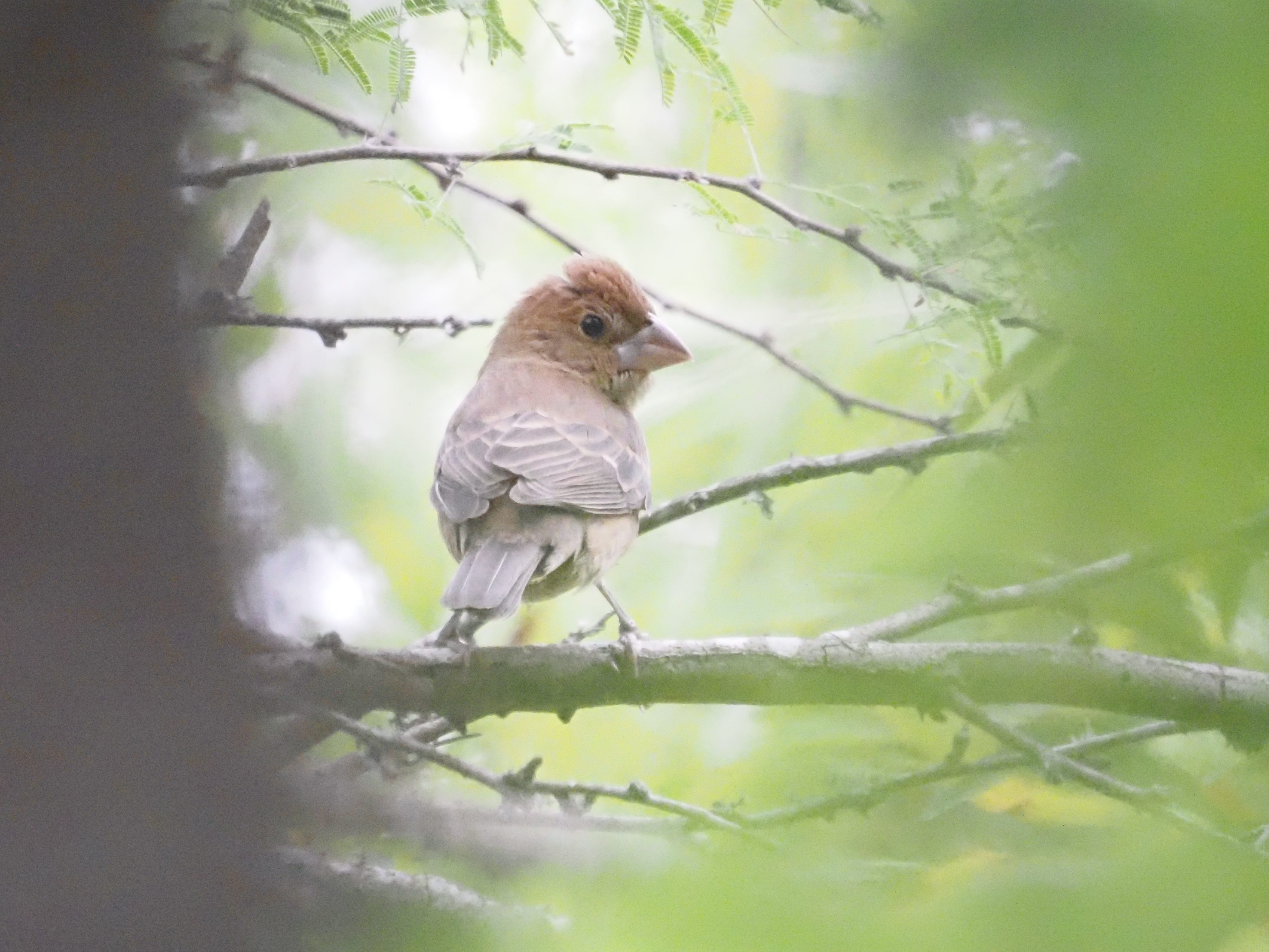
The shoreline around Corpus Christi is really interesting and a short stop in a marshy area produced excellent views on American Avocet, Western & Stilt Sandpipers, Sanderling, Ruddy Turstone, Marbled Godwit, Long-billed Curlew and some commoner species including Grey Plover, Black-necked Stilts and Brown Pelicans. A carefully scanning in the tidal plains produced not only Caspian & Foster’s Terns but also Snowy, Semipalmated & Piping Plovers, and Cabot’s and Royal Terns.
From here, we drove to the Port Aransas Nature Reserve to end our day exploring the reedbeds and freshwater ponds of these lovely corner. Here we were welcomed by a extremely tame Sora. The broadwalk along the marshes allowed us great views on Tricolorated Herons, white form Reddish Egret and lovely American White Pelicans & Short-billed Dowitchers in lovely afternoon light while a few Lesser Black-backed Gulls were flying over. A careful scanning of the reeds soon revealed an American Bittern appearing and disappearing, and a second Sora was seen walking along the edge of the reeds. There were some ducks, with the American Wigeons already back to show their lovely coloration and some Blue-winged Teals walking that path down. But our scanning of the reeds was abruptly broken by a Least Bittern that crossed the lagoon and landed really close to us, merging into the vegetion in a pair of seconds! Still enjoying this sight, a Clapper Rail just appeared from under our feet to do a short flight and land really close from where the Least Bittern blinded itself. After such a great afternoon we came to the hotel to enjoy a lovely dinner!
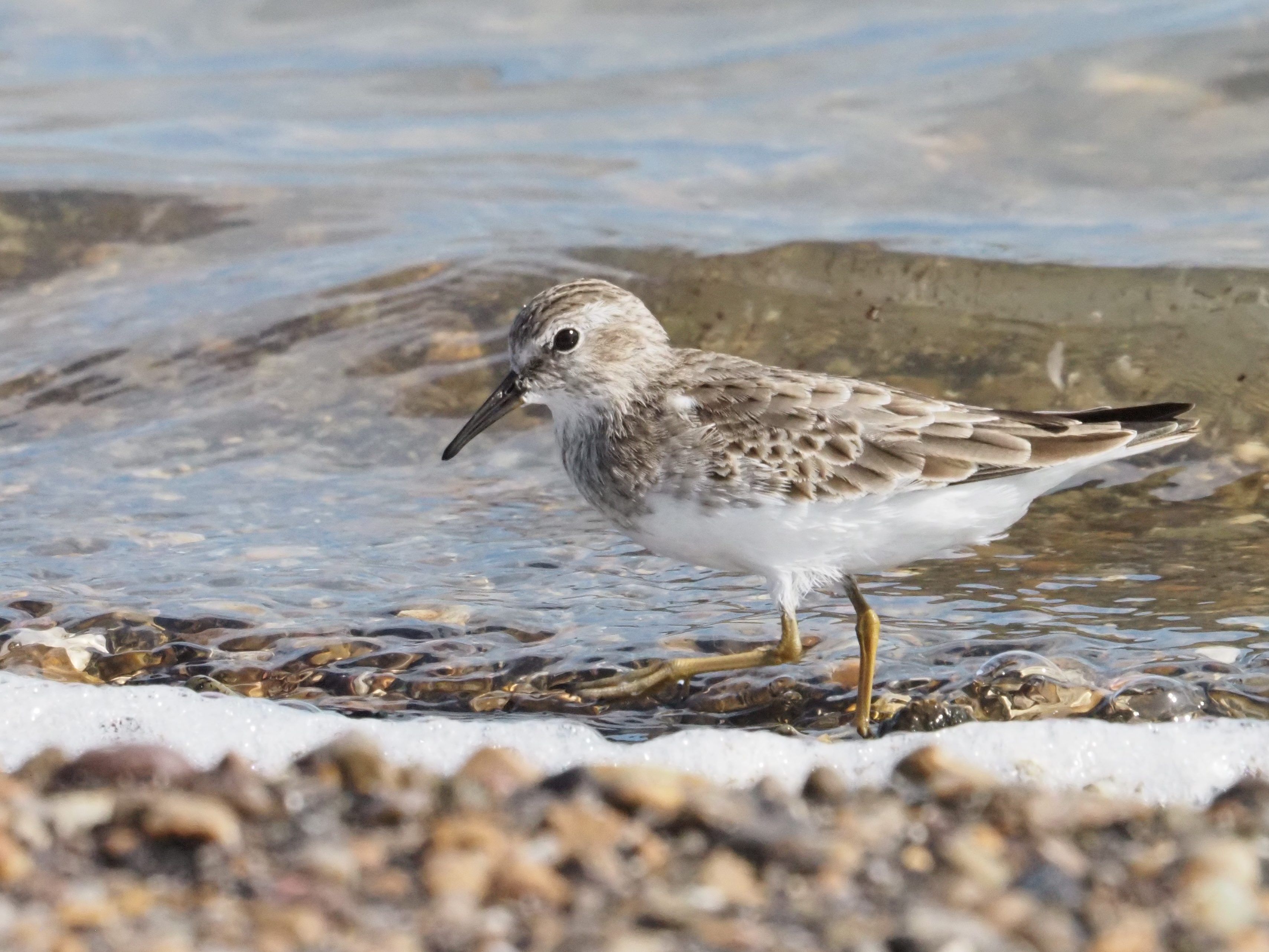





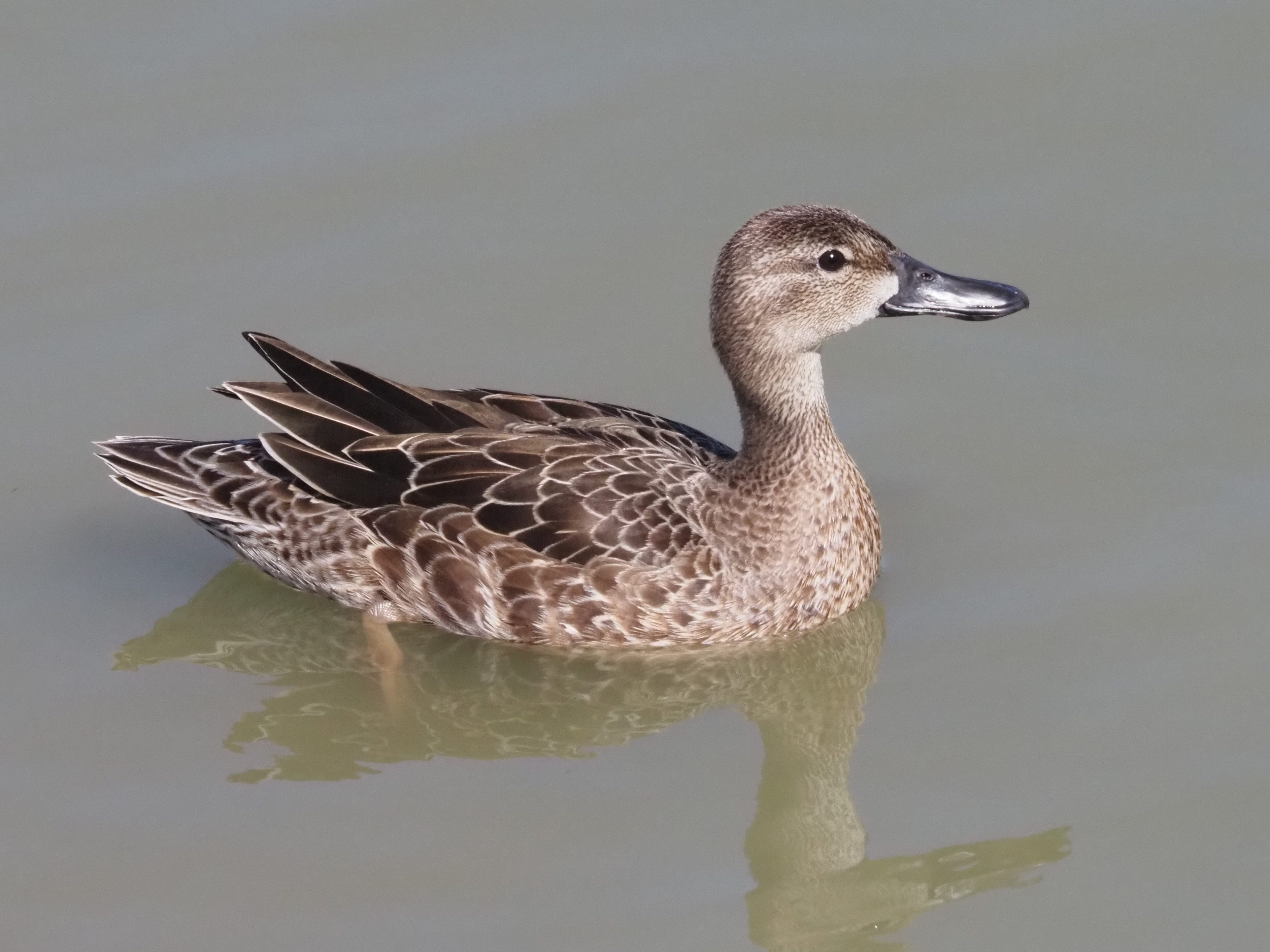
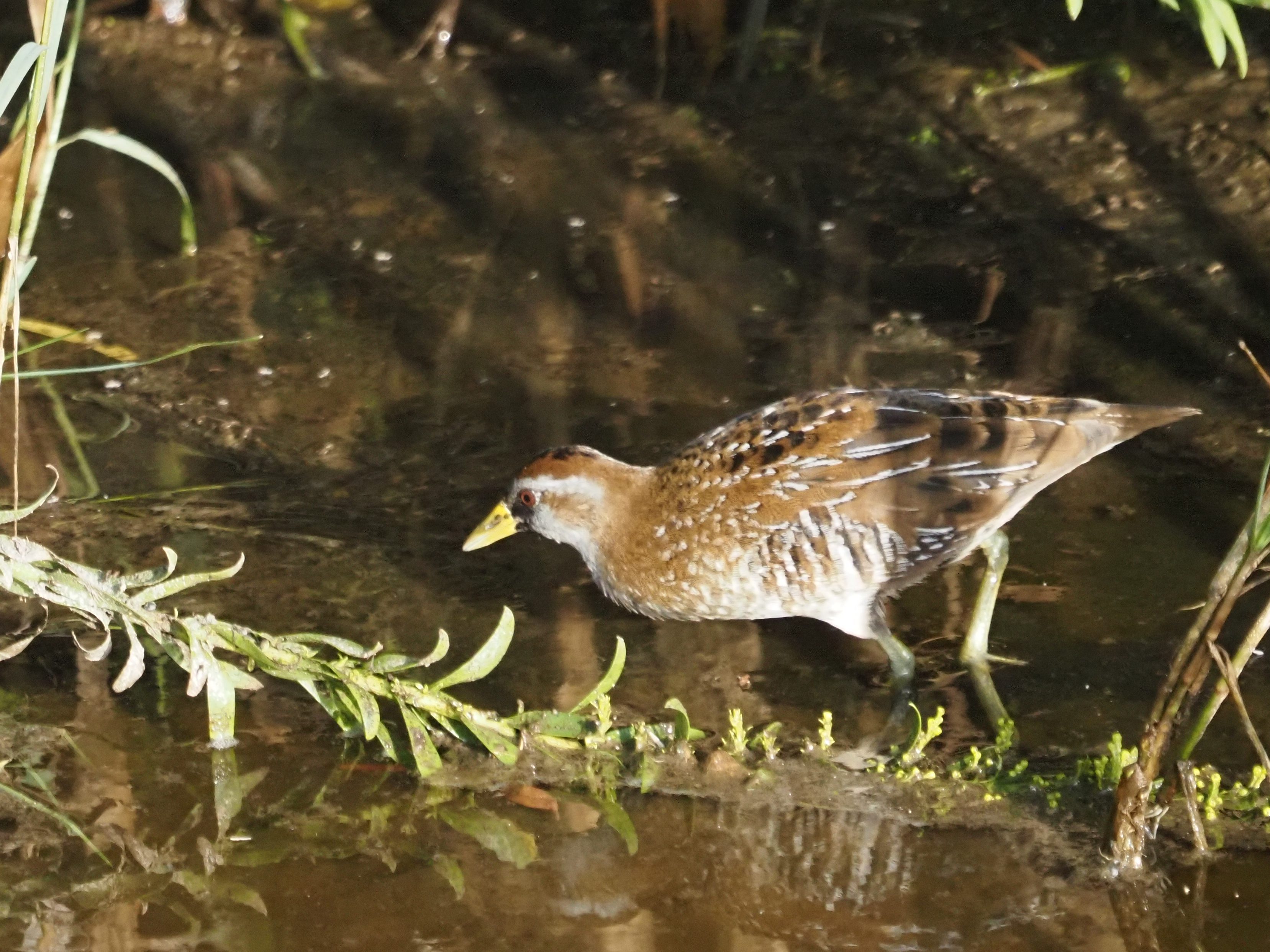
Day 10. Goose Island State Park + Skimmer. Early morning start to explore the Goose Island State Park, a first go for trying to connect with the Whooping Crane population overwintering in the area. A first walk in the forested areas produced the best views on Rose-breasted Grosbeak of the trip along with Grey Catbirds and White-eyed Vireos. From here, we went down to the island, where a few terns and waders were feeding. Here we were lucky enough to find a Wilson’s Plover feeding along with a Semipalmated Plover, and we all had goos scope views on both species feeding side by side. Walking in the marshes around we were also lucky, and a Clapper Rail just flew to us to land a few feet away from us. We could track the bird for over a minute allowing great views and photos on it! After a while and with no sign of any Crane we went to explore a close pond, where we found the first Anhinga of the trip plus 3 Indigo Buntings feeding in the grass around. and the only one Tree Swallow of the tour flying along with Barn Swallows



After a midday break we went to another corner combining reedbeds and tidal plains. Soon after our arrival, a Grove-billed Ani called from the thickets around and after soe efforts we got short but solid views on it. Common Yellowthroats were really active, and when arrived to the tidal area we saw a lovely flock of Black Skimmers resting along with many Laughing Gulls, 1 Ring-billed Gull, Avocets, Sanderlings, 2 Western Sandpipers, Marbled Godwits and Foster’s Terns. While scanning around a short call came from the reeds, and a pair of seconds later a lovely Nelson’s Sparrow appeared in the top of a bush beside our platform, showing its wonderful orange/pumcacke face with a lovely, well defined grey auricular patch. Apparently this is a scarcity around Corpus Christi, and a really good adding to our list!





Day 11. Morning start to explore a bit more the Bucher Park where we got a good selection of birds. Just parking, a Summer Tanager showed out by the van, and soon we contacted with some Warblers including Orange-crowned and Tennessee. Great Kiskadees were active as ever, and while scanning the trees we got an Ash-throated Flycatcher, another scarcity in the area in these dates. Still not recovered from this finding, a 1st winter Yellow-bellied Sapsucker just landed by our small group, allowing excellent (but short) views on the bird. When leaving the park, a female American Redstart just appeared in the low branches of a small tree, giving us a great end to our hour-long walk!
Our second stop of the day was to explore Oso Bay Wetlands. Here we were welcomed by flocks of Sandhill Cranes, just arriving from their nesting grounds to spend the winter in Corpus. Several Lincoln’s Sparrows were moving around along with some Savannah Sparrows, and another Ani was calling in the thickets. Crested Caracaras were in the move around and while enjoying the Thrasers and Grey Catbirds around a Firecrest-like call came to us, and we fastly discovered a Golden-crowned Kinglet feeding in the mesquites by the track. A bit beyond a superb Yellow-throated Warbler allowed some good shots and our visit to this location ended with a Sprague’s Pipit appearing from under our feet to show briefly before flying away!




After lunch, we went to the South Texas Botanical Gardens. Here we enjoyed the several ducks in the lagoons. American Pigeons and Blue-winged Teals were the most common but we also located 4 Mottled Ducks, 27+ Ruddy Ducks, 6 Ring-necked Ducks and 2 Lesser Scaups. 2 Black-necked Grebes were also noted, and Northern Harriers and Cooper’s Hawks were flying around to check the capabilities and reactions of the ducks. From here we moved North to end the day in __. There we got a Zone-tailed Hawk flying over being moved by a Red-shouldered Hawk, a really scarce species and fabulous adding for the trip! In the marshes it was little movement but we still got really close views on 2 Sedge Warblers that unfortunately didn’t allow any photo.
Day 12. Aransas Wildlife National Refuge is the very well known place where Whooping Cranes come to overwinter. Unfortunately we arrived a bit too early and the Whooping Cranes were not there yet. The exploration of the area started with a short-walk around the information center. It was a cloudy and windy day but we still got some small birds. Along with the typical species for the area, we enjoyed good views on a Yellow-breasted Chat, one of the largest warblers in North America, that appeared from a thicket along with Thrasers and Catbirds.
The marshes beyond produced good views on Herons and Egrets plus 2 Virginia Rails (one of them literally walking our path in front of us), 1 Clapper Rail, Common Terns, Gull-billed Terns, Reddish Egrets and the good views on Alligators. The main pond for ducks in Aransas didn’t produce so much, and a solitary Cinnamon Teal was the most interesting of a lagoon dominated by American Wigeons and Blue-winged Teals. We spent quite a long time looking for Whooping Cranes in the main watch tomer for them, but we didn’t get anything out a of a single Sandhill Crane moving in the marshes.
Back to the wood trails crossing the swamps we were lucky enough to find another American Bittern only 20 metres away from us. We waited quite long hoping for the bird to come out of the reeds, but never happened. In the meanwhile, another Sora walked around us providing, once more, great looks.



Day 13. Early morning stop in the marshes checking for something new to appear. The morning was warm and windy, and massive clouds in the horizon suggested the rain to come. In the tidal planes, Black Skimmers were again the main characters along with 2 distant Piping Plovers and Stint Sandpipers. 4 Frankling Gulls were noticed roosting along with Laughing Gulls, and a full adult American Herring Gull was a nice adding for the list of the trip.
Living Corpus, we transfered to Bolivar Peninsula via Houston. In our way we had a number of intense showers. We arrived to Houston with a windy and extremely cloudy ambient. A small park in the South West of the city was the place to explore. We only had 20 minutes before a massive rain started to come down. But we did have luck! The first bird we saw inside the park was an impressive Pileated Woodpecker doing its way in the woods. It called several times before flying away. Only a pair of minutes after that 3 American Robins showed out and 1 Downy Woodpecker came to feed around us. No time for more. A extremely intense rain started. We moved for lunch around the park, hoping for the weather to clear out in the meanwhile, but did the opposite. The rest of the transfer and afternoon we faced intese rains and winds and by the time we did arrive to the Bolivar Peninsula it was almost dark.
But right before going for dinner we had a short walk around our accommodation. The weather was surprisingly calm and clear, and in only five minutes of scanning we got a Great Horned Owl owling in the trees around and eventually it did fly over us, allowing a short but really intense sight!

Day 14. Our last morning in Texas was devoted to explore the marshy flatlands in the Bolivar Peninsula. After the strong storm and the heavy rain of the last afternoon, we faced a calm, cloudy morning. We had only a pair of hours, but it was worth to explore the Bolivar flat lands, specially after we had to cancel any birding in the previous afternoon due to rough weather.
In only a pair hours the group enjoyed the very last views on Crested Caracara, Northern Harrier, White Ibis, Loggerhead Shrike, Snowy & Reddish Egrets, Willets and Least Sandpipers. Clappers Rails were active in the marsh and we had a glimpse in a pair of them, and we were lucky enough to see a King Rail shortly flying above the vegetation, to land in the middle of the marsh and disappear but no before showing the nice contrast in the upperwings.. Here we also had excellent views on some Segde Wrens moving in the low vegetation, while a Nelson’s Sparrow showed shortly in the grass. After some checking, we finally connected with two Swamp Sparrows, and one of them allowed decent views while calling from the grasslands. Cabot’s & Fosters Terns were noted and in our way out of the peninsula we got a group of 4 Boat-tailed Grackles, another nice adding to the tour list.
From here we drove back to Houston with some juvelines Red-tailed Hawks and Blue Jays crossing the road, and two Bald Eagles cicling in the sky while refuelling was a magical way to end up our tour!





List of species of birds seen during the tour:
- Black-bellied Whistling Duck (Dendrocygna autumnalis)
- Muscovy Duck (Cairina moschata)
- Mottle Duck (Anas fulvigula)
- Mexican Duck (Anas diazi)
- Gadwall (Anas strepera)
- Northern Pintail (Anas acuta)
- American Wigeon (Anas americana)
- Green-winged Teal (Anas caroliensis)
- Blue-winged Teal (Spatula discors)
- Cinnamon Teal (Spatula cyanoptera)
- Northern Shoveler (Spatula clypeata)
- Canvasback (Aythya valisineria)
- Redhead (Aythya americana)
- Lesser Scaup (Aythya affinis)
- Ring-necked Duck (Aythya collaris)
- Ruddy Duck (Oxyura jamaicensis)
- Plain Chachalaca (Ortalis vetula)
- Scaled Quail (Callipepla squamata)
- Wild Turkey (Meleagris gallopavo)
- Common Pauraque (Nyctidromus albicollis)
- Common Poor-will (Phalaenoptilus nuttallii)
- Ruby-throated Hummingbird (Archilochus colubris)
- Black-chinned Hummingbird (Archilochus alexandri)
- Rufous Hummingbird (Selasphorus rufus)
- Buff-bellied Hummingbird (Crotophaga sulcirostris)
- Feral Pigeon (Columba livia sp)
- White-winged Dove (Zenaida asiatica)
- Mourning Dove (Zenaida macroura)
- Inca Dove (Columbina inca)
- Eurasian Collared Dove (Streptopelia decaocto)
- White-tipped Dove (Leptotila verreauxi)
- Clapper Rail (Rallus longirostris)
- King Rail (Rallus elegans)
- Virginia Rail (Rallus limicola)
- Sora (Porzana carolina)
- American Coot (Fulica americana)
- American Moorhen (Gallinula galeata)
- Sandhill Crane (Grus canadensis)
- Pied-billed Grebe (Podylimbus podiceps)
- Least Grebe (Tachybaptus dominicus)
- Black-necked Grebe (Podiceps nigricollis)
- American Oystercatcher (Haematopus palliatus)
- Black-necked Stilt (Himantopus mexicanus)
- American Avocet (Recurvirostra americana)
- Grey Plover (Pluvialis squatarola)
- American Golden Plover (Pluvialis !!!!!)
- Killdeer (Charadrius vociderus)
- Semipalmated Plover (Charadrius semipalmatus)
- Piping Plover (Charadrius melodus)
- Snowy Plover (Charadrius nivosus)
- Wilson’s Plover (Charadrius wilsonia)
- Greater Yellowlegs (Tringa melanoleuca)
- Lesser Yellowlegs (Triga flavipes)
- Solitary Sandpiper (Tringa solitaria)
- Spotted Sandpiper (Actitis macularia)
- Willet (Catoptrophorus semipalmatus)
- Marbled Godwit (Limosa fedoa)
- Hudsonian Whimbrel (Numernius hudsonicus)
- Long-billed Curlew (Numenius americanus)
- Ruddy Turnstone (Arenaria interpres)
- Sanderling (Calidris alba)
- Dunlin (Calidris alpina)
- Western Sandpiper (Calidris mauri)
- Least Sandpiper (Calidris minutilla)
- Stilt Sandpiper (Calidris himantopus)
- Long-billed Dowitcher (Limnodromus scolopaceus)
- Short-billed Dowitcher (Limnodromus griseus)
- Laughing Gull (Larus atricilla)
- Franklin’s Gull (Larus pipixcan)
- Ring-billed Gull (Larus delawarensis)
- American Herring Gull (Larus smithsonianus)
- Lesser Black-backed Gull (Larus fuscus)
- Caspian Tern (Hydroprogne caspia)
- Gull-billed Tern (Gelochelidon nilotica)
- Royal Tern (Thalasseus maximus)
- Cabot’s/Sandwich Tern (Thalasseus acuflavidus)
- Foster’s Tern (Sterna fosteri)
- Common Tern (Sterna hirundo)
- Black Skimmer (Rhynchos niger)
- Wood Stork (Mycteria americana)
- Anhinga (Anhinga anhinga)
- Double-crested Cormorant (Phalacrocorax auritus)
- Neotropic Cormorant (Phalacrocorax brasilianus)
- White-faced Ibis (Plegadis chihi)
- White Ibis (Eudocimus albus)
- Roseate Spoonbill (Platalea ajaja)
- American Bittern (Botaurus lentiginosus)
- Least Bittern (Ixobrychus exilis)
- Great Blue Heron (Ardea herodias)
- Agró blanc (Agrodiaetus albus)
- Snowy Egret (Egretta thula)
- Reddish Egret (Egretta rufescens)
- Little Blue Heron (Egretta caerulea)
- Tricolored Heron (Egretta tricolor)
- Western Cattle Egret (Bubulcus ibis)
- Black-crowned Night Heron (Nycticorax nycticorax)
- Yellow-crowned Night Heron (Nycticorax violacea)
- American White Pelican (Pelecanus erythrorhynchos)
- Brown Pelican (Pelecanus occidentalis)
- Black Vulture (Coragyps atratus)
- Turkey Vulture (Cathartes aura)
- Osprey (Pandion haliaetos)
- White-tailed Kite (Elanus leucurus)
- Sharp-chinned Hawk (Accipiter striatus)
- Cooper’s Hawk (Accipiter cooperi)
- Northern Harrier (Circus hudsonius)
- Harri’s Hawk (Parabuteo unicinctus)
- Red-shouldered Hawk (Buteo lineatus)
- Red-tailed Hawk (Buteo jamaicensis)
- Ferruginous Hawk (Buteo regalis)
- Zone-tailed Hawk (Buteo albonotatus)
- Swainson’s Hawk (Buteo swainsoni)
- Broad-winged Hawk (Buteo platypterus)
- Bald Eagle (Hieraaetus leucocephalus)
- Eastern Screech Owl (Otus asio)
- Barred Owl (Strix varia)
- Burrowing Owl (Athene cunilaria)
- Belted Kingfisher (Ceryle alcyon)
- Ringed Kingfisher (Ceryle torquata)
- Green Kingfisher (Chloroceryle americana)
- Yellow-bellied Sapsucker (Sphyapicus verius)
- Red-bellied Woodpecker (Melanerpes carolinus)
- Golden-fronted Woodpecker (Melanerpes aurifrons)
- Downy Woodpecker (Picoides pubescens)
- Hairy Woodpecker (Picoides villosus)
- Ladder-backed Woodpecker (Picoides scalaris)
- Red-cockaded Woodpecker (Picoides borealis)
- Pileated Woodpecker (Dryocopus pileatus)
- Crested Caracara (Caracara cheriway)
- Aplomado Falcon (Falco femoralis)
- American Kestrel (Falco sparverius)
- Esmerla (Falco columbarius)
- Peregrine Falcon (Falco peregrinus)
- Monk Parakeet (Myiopsitta monachus)
- Eastern Phoebe (Sayornis phoebe)
- Say’s Phoebe (Sayornis saya)
- Vermilion Flycatcher (Pyrocephalus rubinus)
- Least Flycatcher (Empidonax minimus)
- Eastern Wood-Pewee (Contopus virens)
- Ash-throated Flycatcher (Myiarchus cinerascens)
- Western Kingbird (Tyrannus verticalis)
- Tropical Kingbird (Tyrannus melancholicus)
- Couch’s Kingbird (Tyrannus couchii)
- Scissor-tailed Flycatcher (Tyrannus forficatus)
- Great Kiskadee (Pitangus sulphuratus)
- Loggerhead Shrike (Lanius ludovicianus)
- White-eyed Vireo (Vireo griseus)
- Red-eyed Vireo (Vireo olivaceus)
- Blue-headed Vireo (Vireo solitarius)
- Blue Jay (Cyanocitta cristata)
- Green Jay (Cyanocitta yncax)
- Woodhouse Scrub-Jay (Aphelocoma woodhouseii)
- American Crow (Corvus brachyrhynchos)
- Common Raven (Corvus corax)
- Chihuahuan Raven (Corvus cryptoleucus)
- Carolina Chickadee (Poecile caroliensis)
- Tufted Titmouse (Baeolophus bicolor)
- Black-crested Titmouse (Baeolophus atricristatus)
- Verdin (Auriparus flaviceps)
- Barn Swallow (Hirundo rustica)
- Cave Swallow (Petrochelidon fulva)
- Tree Swallow (Tachycineta bicolor)
- Northern Rough-winged Swallow (Stelgidopteryx serripenis)
- Sand Martin (Riparia riparia)
- Golden-crowned Kinglet (Regulus satrapa)
- Ruby-crowned Kinglet (Regulus caledula)
- Marsh Wren (Cistothorus palustris)
- Sedge Wren (CIstothorus plantensis)
- Rock Wren (Salpinctes obsoletus)
- Canyon Wren (Catherpes mexicanus)
- Carolina Wren (Thryothorus ludovicianus)
- Bewick’s Wren (Thryomanes bewickii)
- House Wren (Troglodytes aedon)
- Black-tailed Gnatcatcher (Polioptila melanura)
- Blue-gray Gnatcatcher (Polioptila caerulea)
- Brown-headed Nuthatch (Sitta pusilla)
- Gray Catbird (Dumetella caroliensis)
- Northern Mockingbird (Mimus polyglottos)
- Brown Thrasher (Toxostoma rufum)
- Long-billed Thrasher (Toxostoma longirostre)
- Curve-billed Thrasher (Toxostoma curvirostre)
- Common Starling (Sturnus vulgaris)
- American Robin (Turdus migratorius)
- Clay-colored Robin (Turdus grayi)
- Eastern Bluebird (Sialias sialis)
- House Sparrow (Passer domesticus)
- America/Buff-bellied Pipit (Anthus rubescens)
- Sprague’s Pipit (Anthus spragueii)
- Lesser Goldfinch (Carduelis psaltria)
- House Finch (Carpodacus mexicanus)
- Canyon Towhee (Pipilo fuscus)
- Green-tailed Towhee (Pipilo chlorurus)
- Olive Sparrow (Arremonops rufivirgatus)
- Lark Bunting (Calamospiza melanocorys)
- Black-throated Sparrow (Amphispiza bilineata)
- Rufous-crowned Sparrow (Aimophila ruficeps)
- Cassin’s Sparrow (Aimophila cassinii)
- Clay-colored Sparrow (Spizella pallida)
- Nelson’s Sparrow (Ammodramus nelsoni)
- Brewer’s Sparrow (Spizella breweri)
- Vesper Sparrow (Pooectes gramineus)
- Lark Sparrow (Chondestes grammacus)
- Savannah Sparrow (Passerculus sandvichensis)
- Lincoln’s Sparrow (Melospiza lincolnii)
- Swamp Sparrow (Melospiza georgiana)
- Harri’s Sparrow (Zonotrichia querula)
- White-crowned Sparrow (Zonotrichia leucophrys)
- White-throated Sparrow (Zonotrichia albicollis)
- Altamira Oriole (Icterus gularis)
- Audubon’s Oriole (Icterus graduacauda)
- Eastern Meadowlark (Sturnella magna)
- Western Meadowlark (Sturnella neglecta)
- Red-winged Blackbird (Agelaius phoeniceus)
- Common Grackle (Quiscalus quiscula)
- Great-tailed Grackle (Quiscalus mexicanus)
- Boat-tiled Grackle (Quiscalus major)
- Brown-headed Cowbird (Molothrus ater)
- Bronzed Cowbird (Molothrus aeneus)
- Summer Tanager (Piranga rubra)
- Nashville Warbler (Vermivora ruficapilla)
- Orange-crowned Warbler (Vermivora celata)
- Tennessee Warbler (Leiothlypis peregrina)
- Yellow-rumped Warbler (Dendroica coronata)
- Black-and-White Warbler (Mniotilta varia)
- Common Yellowthroat (Geothlypis trichas)
- American Yellow Warbler (Setophaga petechia)
- Yellow-throated Wabler (Setophaga dominica)
- Wilson’s Warbler (Wilsonia pusilla)
- American Redstart (Setophaga ruticilla)
- Yellow Throated Chat (Icteria virens)
- Northern Cardinal (Cardinalis cardinalis)
- Pyrrhuloxia (Cardinalis sinuatus)
- Blue Grosbeak (Passerina caerulea)
- Rose-breasted Grosbeak (Pheucticus ludovica)
- Indigo Bunting (Passerina cyanea)

